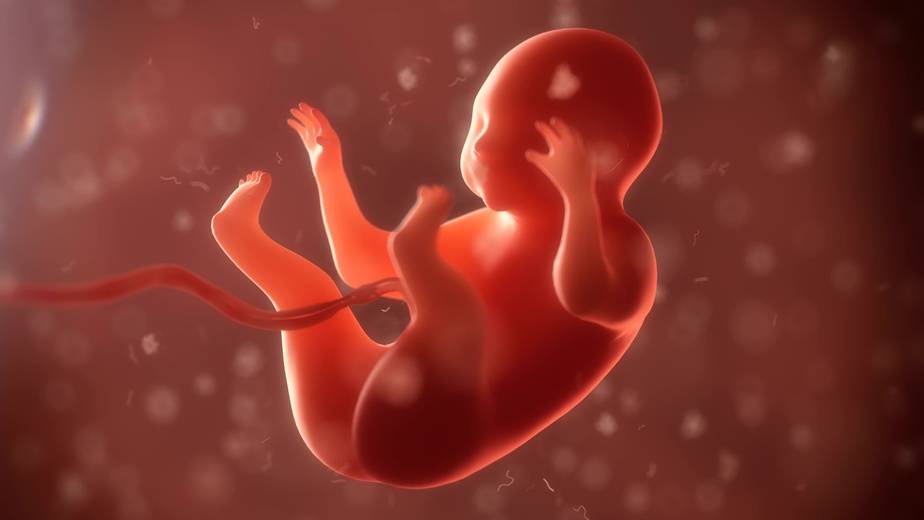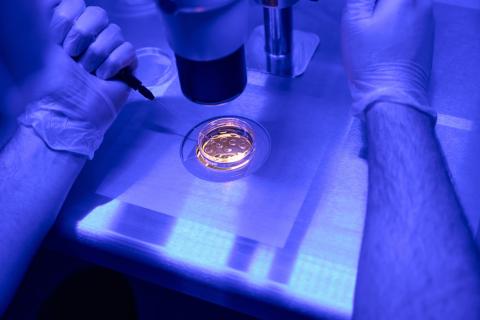Reactions: organoids grow from amniotic fluid cells
A multidisciplinary team of researchers has succeeded in developing different types of organoids from cells obtained from amniotic fluid. According to the authors, this breakthrough could help to better understand the later stages of development during pregnancy and to advance research into congenital anomalies. The study is published in the journal Nature Medicine.

Iván Fernández - organoides EN
Iván Fernández Vega
Full professor of Pathological Anatomy at the University of Oviedo, Scientific Director of the Principality of Asturias Biobank (BioPA) and Coordinator of the Organoid hub of the ISCIII Biomodels and Biobanks platform
The study is of high quality and very interesting from a scientific and social point of view. In prenatal research, the creation of fetal organoids had been done from fetal tissues collected post mortem through biobanks and under ethical-legal restrictions that may hinder research. This article describes a technique to derive fetal epithelial organoids from different tissues from fetal fluids that make up the amniotic fluid, using minimally invasive sampling.
It describes how organoids from small intestine, renal tubules and lungs are expandable and can functionally mature with great potential for regenerative medicine and personalised disease modelling. This advance would allow the study to be performed in ongoing pregnancies, providing ad hoc solutions in the future, with real-time analysis during gestation, potentially leading to more personalised and effective treatments.
The main limitation of the study is its applicability in those alterations in foetal development that produce oligohydramnios, which is the medical term for an insufficient amount of amniotic fluid. That is, there are renal anomalies such as renal agenesis (absence of a kidney), renal dysplasia (abnormal development of the kidney) or urethral atresia (obstruction of the urinary tract) that can interfere with foetal urine production and therefore reduce the amount of amniotic fluid. Also abnormalities in the foetal bladder, such as urinary tract obstruction or bladder hypoplasia (abnormally small development of the bladder), can influence the amount of amniotic fluid. Also, some genetic or congenital conditions, such as Potter's syndrome or other chromosomal abnormalities, may be associated with reduced fetal urine production and consequently with oligohydramnios.
Núria Montserrat - organoides EN
Núria Montserrat
ICREA Research Professor at the Institute of Bioengineering of Catalonia
The study presents a new approach to the generation of human organoids. Specifically, it uses a new, hitherto unused cell source for the generation of different types of organoids, including lung, intestine and kidney. To this end, the team performs a series of experiments that provide quantitative and qualitative data. The technologies used, as well as the experimental approaches, are appropriate. The study is therefore of good quality and also very interesting in the field of organoids.
To date, the organoid field has demonstrated that it is possible to establish three-dimensional cultures that recapitulate important aspects of tissue or organ function, such as the arrangement of individual cells in tissues and their function in vitro. To this end, adult stem cells or pluripotent stem cells (i.e. embryonic stem cells and induced pluripotent stem cells) have been used as a starting cell source in this field of study. In this case, the work uses a novel cell source, such as amniotic fluid cells. To do this, they first study to understand the 'signature' of these cells, shedding light on their differentiation potential using bioinformatics. Subsequently, they validate these findings by making the different organoids. Thus, this study highlights the importance and benefit of RNA sequencing to identify molecular processes that can determine the generation of organoids from unexplored cellular sources. Furthermore, the study uses amniotic fluid cells to generate organoids to model a congenital pathology. Therefore, it opens the door to future work in which, for example, organoids can be established from this new cell source to study other congenital pathologies, as well as the impact of other clinical variables on organ development.
Some of the organoids generated by the study, such as kidney organoids, are simpler (in terms of cellular composition) than those that can be generated from other cell sources. This simplicity lies precisely in the differentiation potential of the cells used in the study. Kidney organoids generated from pluripotent stem cells have more than a dozen different cell types, and those in this study have several cell types. This situation opens the door to new interventions, such as the use of systems like co-culture (i.e. mixing different cell types) to explore the possibility of making more complex organoids. In this sense, the possible limitation of the study actually represents an opportunity to further explore the differentiation potential of amniotic fluid cells for organoid generation.
Gerli et al.
- Research article
- Peer reviewed
- Experimental study
- In vitro



